‘F’ Force – Commanding Officers
Author Peter Brune was very honest when he wrote of Kappe…..
‘incompetence, sheer neglect and the total use of abuse of the privileges of command’.
Other well known Australian military historians/writers who agreed with Brune included Don Wall and Tim Bowden (acclaimed oral historian, broadcaster, radio & television documentary maker).
Unfortunately Kappe was one of a number of incompetent AIF & British Officers.
The overall command of ‘F’ Force was under British commanding officer Lt-Col S.W. Harris, 18th Division. AIF to provide 3,600 men and the British 3,400. Lt. Col. Dillon M.C. would command the British contingent and Lt. Col Kappe would command the AIF.
The survivors of F’ Force returned to Changi in appalling condition, all were skeletal and many seriously ill, some dying and all dressed only in rags and filthy. A large number of very sick POWs were left behind in hospital camps in Burma and Thailand.
VX48789 Lt. Col Charles Henry Kappe, 8th Division,
1942-1945, Singapore.
8th Division AIF Chief Signals Officer
CO of Australian Contingent of ‘F’ Force Thailand
Please read an overview of ‘F’ Force
He was accommodated at Kami Sonkarai Camp. ‘F’ Force endured deaths from Cholera and every tropical illness resulting in huge loss of life. The died of starvation, overwork and illness.
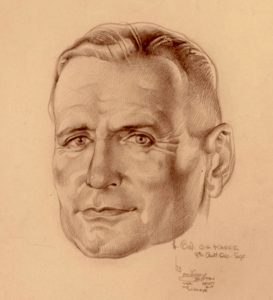
In contrast Lieutenant Colonel Kappe returned to Changi well conditioned, in fact he was fat. Officers received much more pay than enlisted men, and did not work. Kappe initially showed interest in his men but this quickly waned.
He preferred not to have his face slapped by the Japanese and rarely exited his tent. Some officers pooled their extra pay and shared with their men. Kappe took good care of himself with extra food from his officer’s allowance. Kappe had even turned over some of his own men to the Japanese for punishment.
The men knew it. They detested him. But they rarely spoke of it. (This information from Interviews by Tim Bowden for ABC Radio and recorded in his book ‘Stubborn Buggers’)
Peter Brune in his book ‘Descent into Hell’ is further revealing of Kappe’s poor leadership. He described Kappe’s record as one of ‘incompetence, sheer neglect and the total use of abuse of the privileges of command’.
Fellow officer QX6306 Captain Fred E . Stahl (Corps of Signals) wrote of Kappe –
‘One of his first acts was to issue an instruction that he (Kappe) was to receive double rations.’
Kappe also thought he was best qualified to be the person to go back to Singapore and tell the story of the bastardry!
Private John Boehm told Brune Kappe ‘didnt have any patched clothes…………he looked physically well ……the doctors and kitchen staffs hated his guts because he ….demanded what he wanted ………his nickname was Kappe-yama.’

SINGAPORE, STRAITS SETTLEMENTS, 1945-09-20. LIEUT-COL C.H. KAPPE, CHIEF OF STAFF, AUSTRALIAN IMPERIAL FORCE PRISONERS OF WAR – MALAYA (1), MAJOR N. MCG. JOHNSTON, ADMINISTRATIVE COMMAND, 2/30 AUSTRALIAN INFANTRY BATTALION (2) AND LIEUT-COL FREDERICK (BLACK JACK) G. GALLEGHAN, DSO, ED, COMMANDING OFFICER, 2/3RD AUSTRALIAN INFANTRY BATTALION, ALL EX-PRISONERS OF WAR OF THE JAPANESE.
Leaving Kami Sonkari & Burma-Thai Railway November 1943 & returning to Kanchanaburi & then Singapore – most of rail construction was completed
The arrogance of Kappe -17 November 1943
The Japanese gave POWs were given little notice they were about finally leave Kami Sonkarai to return to Kanchanaburi .
From Robin Rowland’s book ‘A River Kwai Story – The Sonkari Tribunal’ we learn Kappe had two large suitcases with him and assigned Sgt. Keith Meakin from his own 8th Division Signal Corps and a warrant officer to watch over them as he (Kappe) supervised the loading of the train. Meakin said he had not seen Kappe at all during his time at Kami Sonkurai prior to this encounter!
When the train finally arrived, much later than expected, there were not enough wagons to carry all the ready and waiting men. This however, this did not stop Kappe from ordering Meakin and the warrant officer to manhandle the two trunks into one of the wagons. They were so heavy it required two men to load them onto a flat car. In the end only Kappe and 50 men got on the wagon. 450 remaining men watched as the train disappeared into the blackness of the jungle while the rain began falling heavier. These men returned to their huts.
The next day, 18 November the Australians at Kami Sonkurai ‘Stood by’ all day until the Japanese told then to walk (or stagger as Sam Arneil wrote) to Sonkarai Camp and then onto Niekhe a distance of 11 kilometres. Only 300 POWs made the journey, 150 men were left behind judged to be too ill to march the distance. Major Noel Johnston remained behind to command and care for the sick. (pages 200 and 201).
KANBURI TO SINGAPORE
Kanburi was a time of recovery for the POWs. Rest and eat a little more. Rations were better than they were on the rail link, but still poor. The days had become dry and warm but the nights cool and sometimes freezing. The POWs were told they could make purchases with camp funds. Kappe who had charge of the Kami Sonkarai camp fund, collected money from the men.
On 19 December Kappe and about 500 men were ordered onto a barge at Kanburi. Once again, Kappe called upon Meakin along with a few other men to cart some heavy cases down to the riverbank. Toyoyama arrived and ordered Kappe go with him. This was the opportunity for the men to open Kappe’s trunks! One contained cartons of Virginia Cigarettes and another had cans of herrings in tomato sauce!
From the barge POWs were transferred to a coal-burning ship that set sail that day.
At Changi the Japanese notified the Malaya Command Bureau of Record & Enquiry that POWs from ‘F’ and ‘H’ Forces would be returning to Singapore. The also notified the Bureau 2,000 men from ‘F’ Force and 800 men from ‘H’ Force had died.
On the sailing ship to Singapore Kappe discovered that some of cases were missing. He immediately ordered a parade, stood on the bridge and criticised the men for stealing food. The men, many of whom were smoking Kappe’s American cigarettes began to boo Kappe.
Kappe yelled “You Fools!” telling them he had used the money to buy food for the journey. There were more Boos!
This was ‘F’ Force funds – Kappe should have known to leave the supplies for the sick at least!
(What was Kappe’s plan? – to sell and make a profit back in Changi or ??)
Kappe then said “I had to look after myself to tell the story!”
The onboard escort were frontline Japanese troops. They had been ordered to treat the POWs better. Either an English speaking Japanese had overheard the Australians or the Australian POWs talked with the Japanese – the combat troops turned on Toyoyama and he was beaten three times.
ARRIVAL SINGAPORE
21 DECEMBER
Stan Arneil arrived Singapore Station at 1.00am and were trucked back to Changi. Most of the Australians were awake and anxiously waiting to see their mates who had left 9 months earlier.The returning men were mostly too exhausted to do anything other than sit. The men of ‘F’ Force could only stare in wonder at the men of Changi who appeared so healthy and clean – whilst they were skeletal, dressed in just a few pieces of rags, filthy dirty with their ulcerated legs dressed from Kanburi Hospital.
Black Jack Galleghan was so shocked he had tears in his eyes. The men of Changi swung into action – the men of ‘F’ Force were taken to their quarters and by 4 am were asleep!
When Dillon and Harris returned to Changi they brought with them the complete and accurate Nominal Rolls of the dead. More than 3,000 men.
The 2/4th wish to acknowledge and thank Robin Rowland for the above information.
** Stan Arneil, ‘F’ Force wrote ‘One man’s War’.
Please read story of Australian Flag & Capt Fred Stahl
And read Stahl’s diary of ‘E’ Force Thailand & Tanbaya Hospital
At the end of the war Kappe provided his records written in Changi about 8th Division to AIF, no doubt recording his involvement with ‘F’ Force Thailand in a favourable light. He was praised and acknowledged for his war contribution.
Col Kappe is also discussed in ‘Leadership of POWs in WW2’ by Katie Lisa Meale, University of Wollongong Thesis Collection.
‘ Kappe was given the task of compiling the Australian war diaries of the campaign which ended with the fall of Singapore to the Japanese. This resulted in a 200,000-word history The Malayan Campaign written in Changi and in Thailand between 1942 and 1945. It was the first full history of the Malaya-Singapore campaign to be written by a participant, though it has only been published in part and in an abridged version.’
Collection relating to the Second World Service of Lieutenant Colonel VX48789 Charles Henry Kappe, 8th Division, 1942-1945, Singapore.
The collection at the AWM consists of Kappe’s manuscript of ‘The Malayan Campaign’, a history of the titular campaign written by Kappe while a prisoner of war at Changi. The manuscript draws upon both Australian and British war diaries, as well as the recollections of fellow prisoners of war, as well as Japanese officers. It has been typed on various materials, largely whatever was available at Changi, including pages of ‘naval message’ paper, scavenged from Singapore Naval Base.
While Kappe had been prevented from publishing the work while continuing to serve in the Australian Army, shortly after his retirement in December 1954, a condensed version was published in newspapers in Melbourne and Sydney. The work, while available in the Memorial’s archive since 1958, has never been widely published.’
Kappe had published his book called ‘The Death Railway’ based on his version of the Malaya-Singapore Campaign, POW life in Changi and ‘F’ Force Thailand.
Initially, former POWs welcomed their freedom and happy to be home with their families. It would take a decade or two (sometimes 3 & 4) before former POWs began writing and publishing their stories. The former POWs were told by AIF to forget about what had happened, people did not want to know and anyway would not believe them.These stories were what shocked Australia – Australians learned what their young men had endured at the hands of the Japanese.
Kappe was a regular soldier. He graduated from Duntroon in 1921. He also attended Quetta, India. (see below).
After the end of the war Kappe was awarded an OBE for his services!
Kappe who was born at Ballarat, died at the age of 66 on 23 October 1967 in Brisbane.
Kappe divorced his first wife in 1936 and remarried 1937.
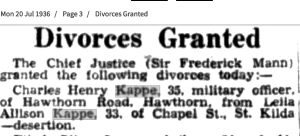

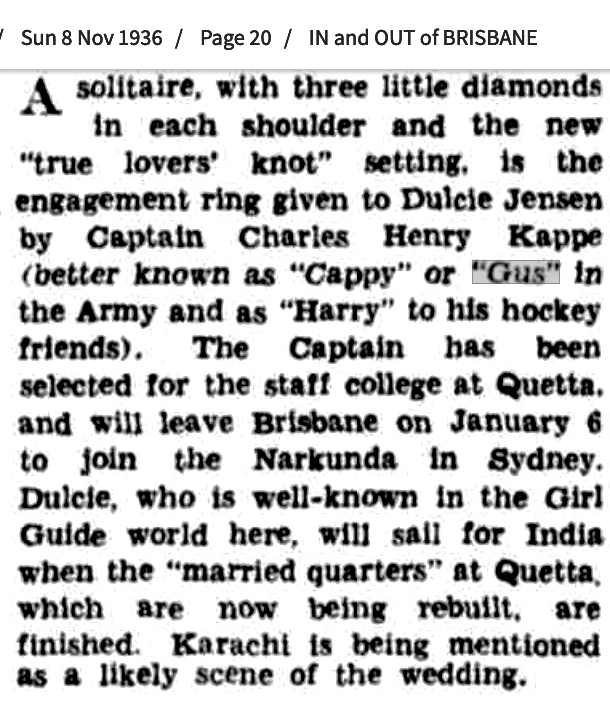

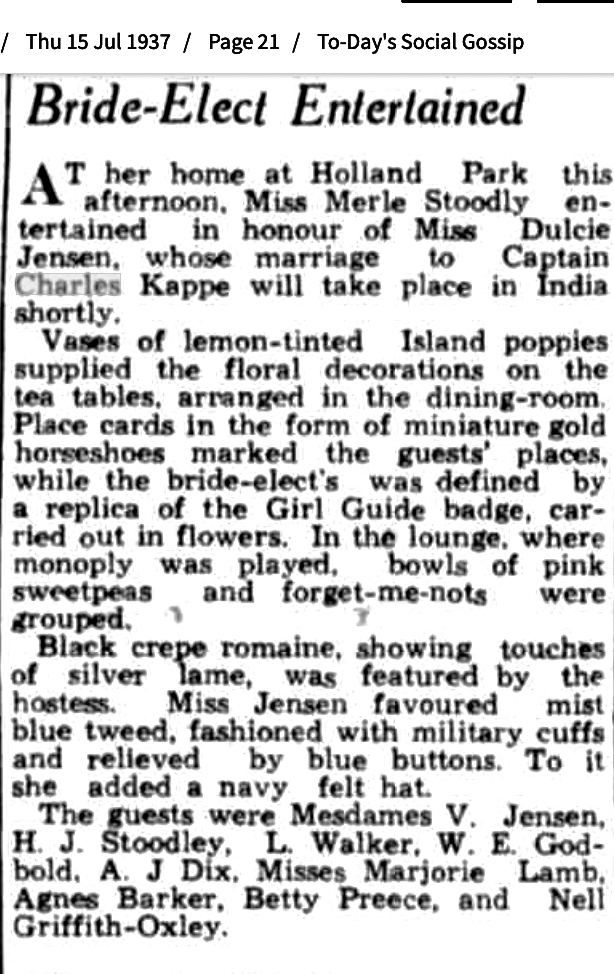



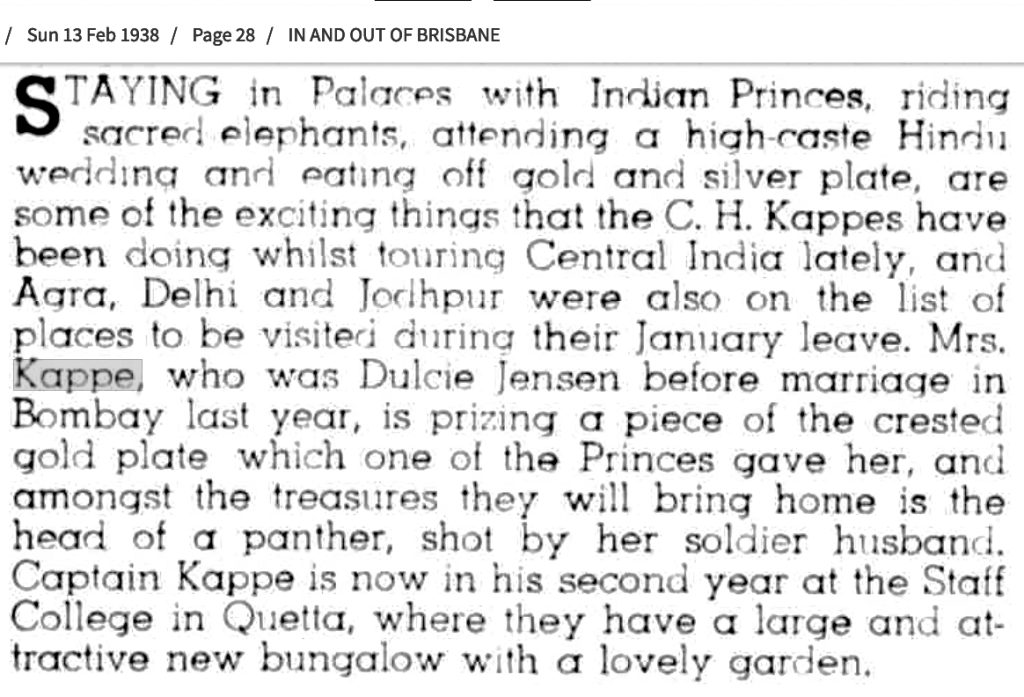

Below: Kappe attended the Gordon Bennett Inquiry 1945.

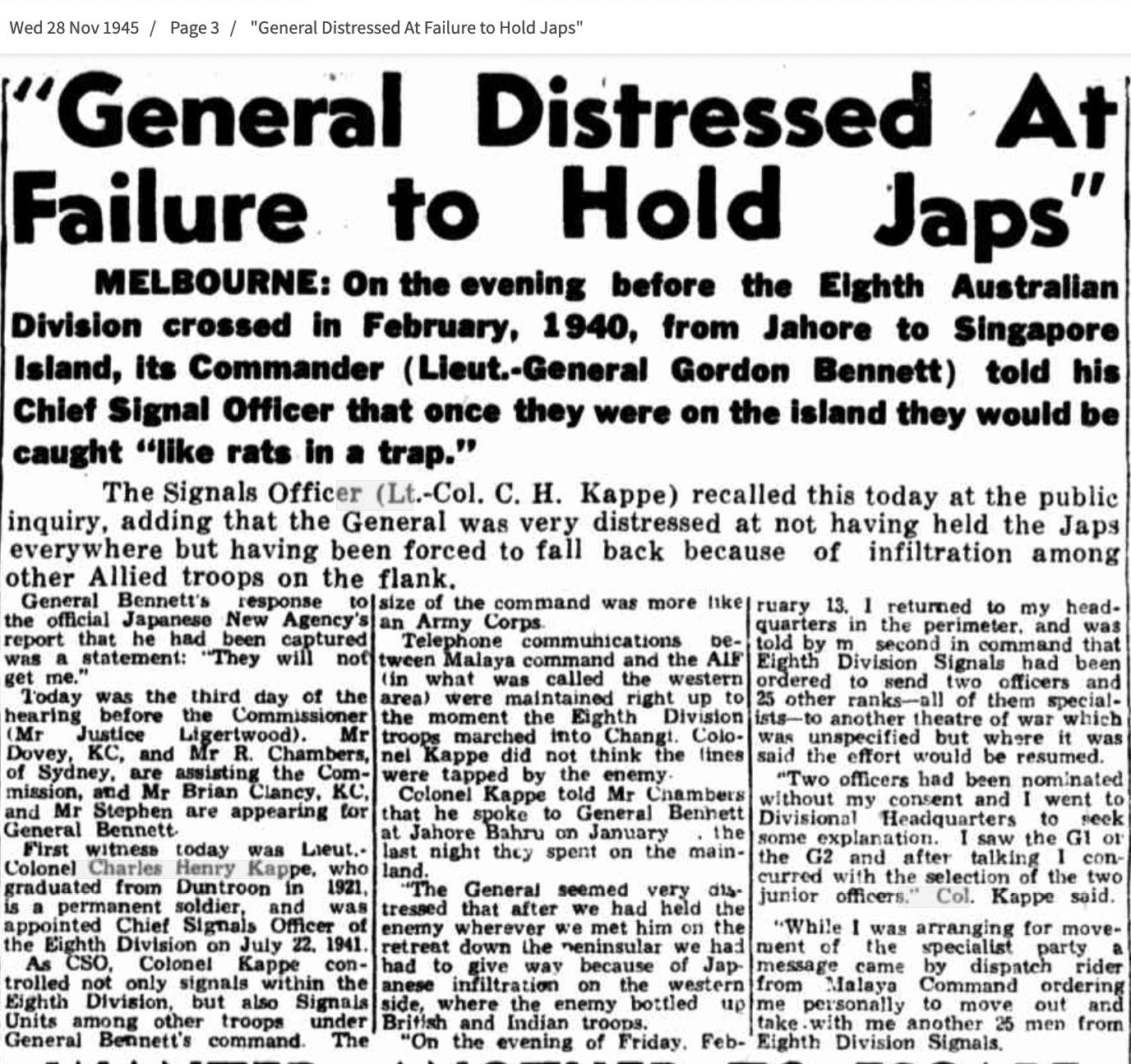

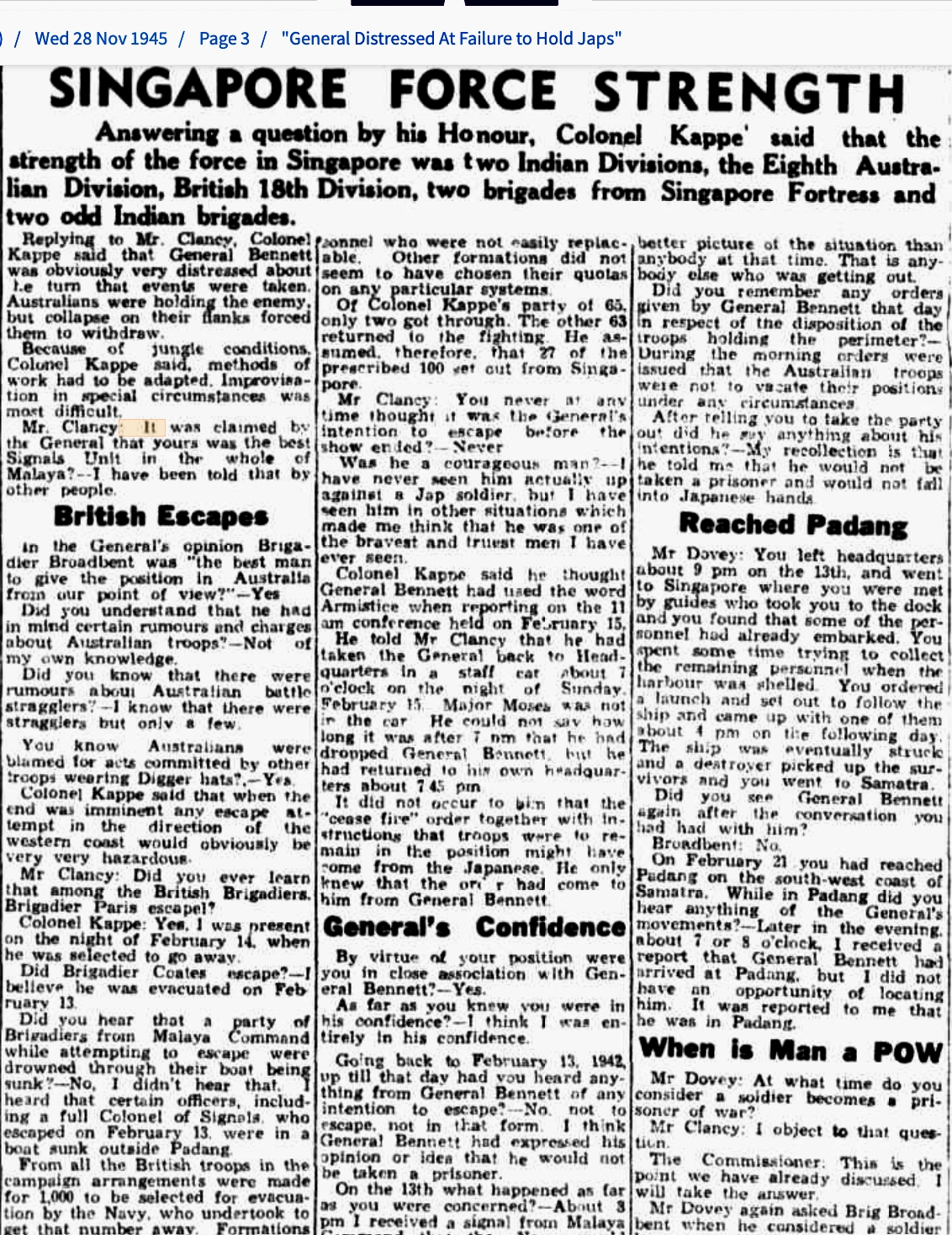

Below: Kappe’s records compiled into stories for newspapers 45.

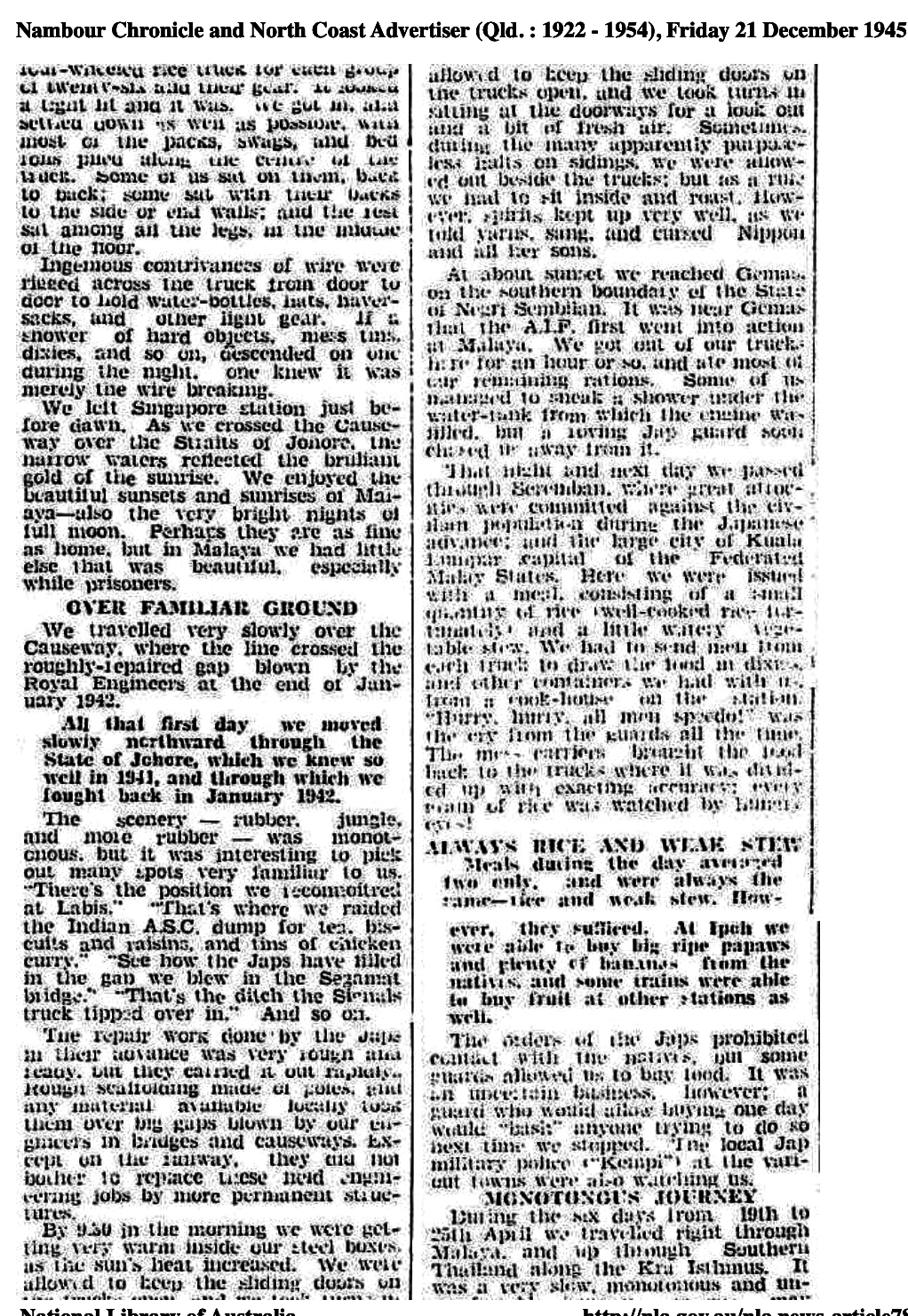

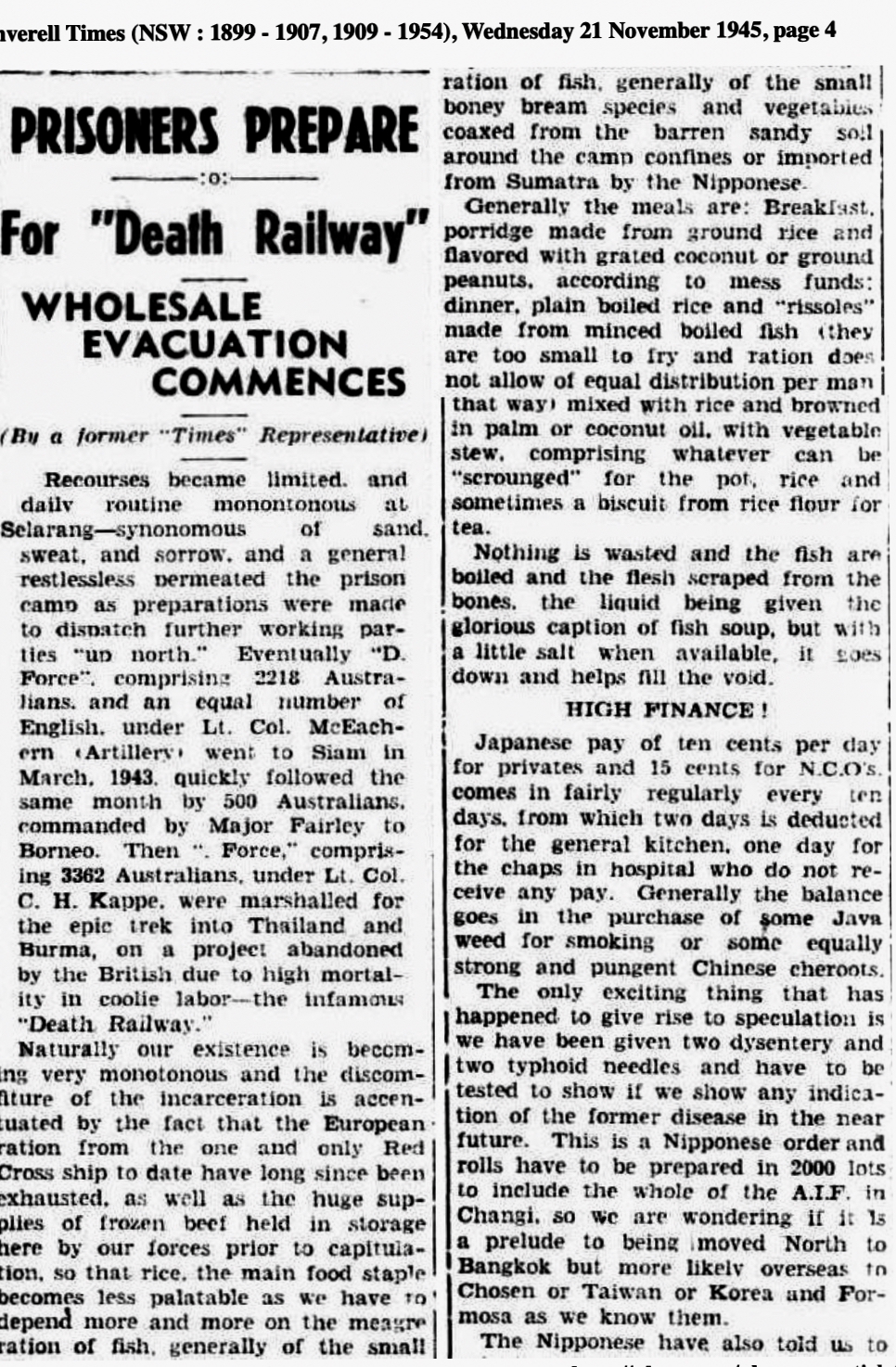
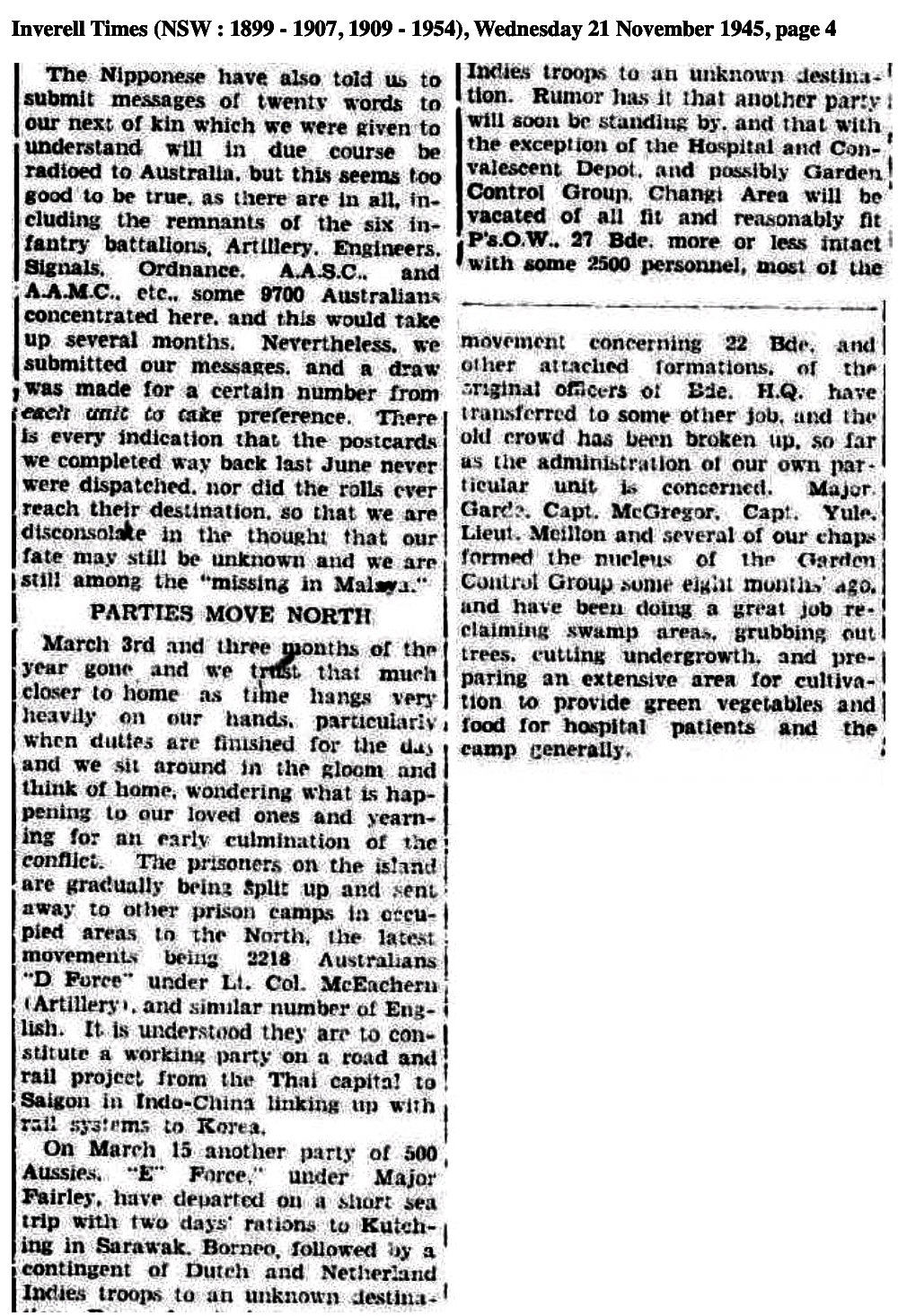


Below: From the Social Pages!

Kappe was awarded OBE.
He died October 1967.
